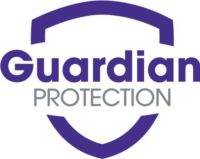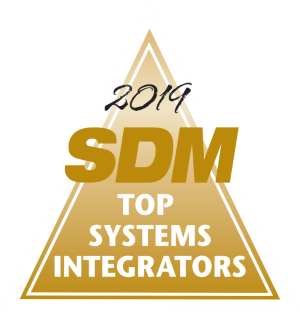Visitor management, when done right, is like security, safety, receptionist, and analyst all in one. It keeps the building secure and safe from threats of all kinds (human, viral and other). It checks in visitors, logging who entered the building and when — and all of that valuable data can then be analyzed to tell building owners how the building is being used, and how they may better suit visitors’ needs.
And in the post-COVID-19 world, visitor management will be more important than ever.
“Facilities have never been so vulnerable, from so many directions: cyber-attacks, corporate espionage and dangerous intruders,” says Jim Vesterman, CEO of Raptor Technologies, Houston. “Outdated, error-prone, insecure paper and pen sign-in logs just won’t cut it anymore. This type of visitor management process is rapidly disappearing, and companies of all sizes are recognizing the value of an automated visitor management system.”
Vesterman points out that visitor management systems can offer businesses strengthened security, and save them money.
“And now, with the global COVID-19 pandemic, automated visitor management systems have emerged as absolutely essential for companies to safeguard their employees and workplaces from this unseen and potentially deadly threat,” Vesterman says.
Emerging Technologies
Even before the coronavirus started changing the way businesses run, certain trends had started emerging in the visitor management space to meet new customer needs.
“For enterprise customers in regulated markets, visitor management systems are evolving from a standalone system used by a gate keeper such as a security guard or front desk personnel to manage entry into an organization, to a solution that integrates across an enterprise’s multiple systems to help reduce risk and maintain compliance,” says Global Offering Leader Marcus Logan at Honeywell Commercial Security, Atlanta.
Ashley Tousignant, senior product marketing manager for Tyco Software House C•CURE 9000 for Milwaukee-based Johnson Controls has seen many technological enhancements being made to visitor management systems, from self-check-in kiosks, to mobile apps and QR codes.
“Gone are the days of the old paper sign-in sheets, as companies are rightfully looking to better verify and track individuals coming on-site to increase the protection of their employees and intellectual property,” Tousignant says.
Rick Leighton, vice president of sales, Sage Integration, Kent, Ohio, says smartphones have been playing an increasingly big role in security, including visitor management.
Through Sage’s software-based visitor management solution, anticipated visitors may be sent an email with an embedded QR code that’s presented to a reader as a person arrives on campus. The QR codes integrate with the access control system, which activates a credential a few minutes before the visitor’s scheduled arrival, automatically expiring at a pre-set time.
Logan has spotted similar key trends in the market.
“The future of visitor management will see an increased need for mobile-based credentials, touchless access, facial recognition and other biometrics,” he says.
AlertEnterprise’s visitor identity management kiosk software includes a new facial recognition feature, which allows organizations to add facial image analysis to the check-in process, according to Vice President of Marketing and Communications Willem Ryan.
Leighton believes facial recognition is an essential part of any successful visitor management system, starting at the perimeter.
“One key to successful visitor management is checking people at the perimeter against a Be On The Lookout (BOLO) list, including the names and photos of people such as disgruntled former employees,” Leighton says. “As people drive through a vehicle entry, the site’s video surveillance system captures two-dimensional profile views to compare with images from social media and other sources using facial recognition software. If there is considerable doubt about a visitor’s identity, it will notify security officers to meet the person at a lobby kiosk for a full face 3D view.”
He also points out the usefulness of visitor management in emergency situations.
“A visitor management system provides a time-stamped audit trail allowing an end user to see who entered their facilities and when,” Leighton says. “Also, a system enables an organization to know who is on-site at any time. That’s valuable information if an emergency evacuation is required.”
All of this information is also valuable when determining whether a space is the right size for an organization, or when an owner wants to know who is entering their building and when.
“The more you know about a visitor, the more you can add to an organization,” says Rachael Ratliff, senior regional sales manager at AMAG Technology, Hawthorne, Calif.
Managing Visitors Post-Pandemic
Just as visitor management was already gaining traction, it received an unexpected boost from the coronavirus crisis.
In order to reopen, many businesses need technologies that visitor management systems can provide.
“Occupants want to know that a space is not just safer, but also healthier,” Logan says. “Building owners have the dual challenge of implementing new policies and then sustaining compliance. Visitor management is going to be highly impacted, and can play a big role in these changes.”
As new policies are put into place, it provides an opportunity for integrators and dealers to become a source for clarity.
“There’s a lot of information being thrown at organizations about the new regulations, and they’re starting to sift through it,” says Genetec Product Marketing Manager Despina Stamatelos. “Because they cannot stop having visitors on-site, visitor management is top of mind at this point, and [businesses] are looking at how to comply with the regulations,” he adds.
“[Customers] are telling us that flexible, enterprise-grade visitor management systems are an important element of safely reopening the workplace post-COVID-19 because they enable them to protect the workplace from the uncontrolled spread of an infectious disease in two key ways,” says Ian Lowe, product marketing director, IAM Solutions, HID Global, Austin, Texas. “One, they enhance visitor registration policies with additional mandatory questions to help identify any visitors who may need other screening; and two, they extend the visitor registration kiosk with a mandatory pop-up asking further questions during visitor check-in.”
Leighton, too, points out the value of visitor management systems that include pre-screening questionnaires.
“In the COVID-19 era, visitors at a perimeter entry should complete a short survey based on the CDC guidelines,” Leighton says. “If there are no problems, the person is emailed a QR code for presentation at a lobby kiosk.”
With the risk mitigation practices that many businesses are implementing to try and curb the spread of COVID-19, Jeff Bransfield, national sales manager at RS2 Technologies, Munster, Ind., says he’s seen a number of screening services come into play to integrate with visitor management technology.
Pre-loaded questionnaires could be used in a healthcare setting ahead of an appointment, or daily questions could be sent to employees to gauge their risk of being infected, for example.
Visitor Management Advice for Integrators
If you’ve yet to dip your toes into the waters of visitor management, now is a great time, as the vertical is seeing a bit of a boom as a result of the coronavirus. But where to start? Here, industry experts already seasoned in all things visitor management offer their most valuable pieces of advice.
“It’s important to sell the remote management features of visitor management going forward. Most existing intercoms only work on local Wi-Fi, but going forward, office managers are not going to be on-site all the time due to staggered schedules. This means visitor management should be remote first as well to support these new times.” — Saurabh Bajaj, Swiftlane
“The COVID-19 crisis has forced the acceleration of enterprise digital transformation, ushering in an era of true cyber-physical convergence. Integrators should look for Visitor Identity Management (VIM) solutions that deliver an integration framework that provides a direct connection with any third party system for services such as background checks, training, ticket management, Wi-Fi service and provisioning to any access control system.” — Willem Ryan, AlertEnterprise
“The most important thing an integrator can do is understand their customer and why they’re looking for visitor management. Is it cost justification? Are they at a certain risk? Who are they really trying to capture from a VMS standpoint? I think it’s so important to ask the why questions, and the driver behind wanting to put it in place.” — Rachael Ratliff, AMAG Technology
“Dealers and integrators always have to worry about managing scope creep. Documenting the workflow necessary for configuration can help. There are many options and configurations available, so it’s important to establish the customer problem and work with the solution vendor on the best configuration to solve the need.” — Marcus Logan, Honeywell Commercial Security
“Understanding a customer’s workflow is critical to designing a successful visitor management system. Begin a project by developing a flow chart that shows how visitors access perimeter and building entries. This chart helps spot potential holes before installing the system.” — Rick Leighton, Sage Integration
“Especially now as communities and economies begin to reopen, security dealers and integrators need to help their customers take the necessary steps to address visitor management. The complexity and number of challenges will vary depending on location, but in the mid- to long-term and on a more global level, there are more proactive measures and best practices that will help an organization’s staff, contractors and visitors safely return to the workplace.” — Ian Lowe, HID Global
“Compliance standards will force facilities to pre-screen visitors prior to the actual visit,” says Paul DiPeso, executive vice president, Feenics, Ottawa, Ontario, Canada. “[An] invitation to visit a building will be a requirement to complete a COVID-19 questionnaire that is mobile-friendly. Once the questionnaire is submitted, a score below a specific threshold would alert security to deny access or investigate when the visitor arrives.”
Tousignant says many customers are looking for customizable options for how they validate visitors or pre-screen prior to a visit.
“Many clients are now sending visitors questionnaires at least a day prior to their visit to ask COVID-19-related questions,” Vesterman says. “Based on the client’s policies, the visitor will either be placed on the approved list or the unapproved list within the … system. When visitors arrive, they scan their driver’s license or passport and take their photos as part of the check-in process, and the system instantly checks them against the company’s approved visitor list and the U.S. Government Consolidated List.”
This can all be done with a self-serve kiosk that includes a touchless scanning feature and visitor-facing camera, or by a receptionist with a desktop scanner and USB webcam turned towards the visitor, reducing potential contamination.
Contamination by touch is on also in the minds of many.
“As workplace access is fundamentally reassessed in the age of COVID-19, delivering a frictionless and secure workspace access experience for guests is top of mind,” Ryan says. “Businesses are seeking to enable a higher standard of security and compliance for visitor management, while providing a positive, friction-free guest and host experience. Mobile devices and facial recognition technology will promote contact-free and frictionless access in bringing visitors on-site.”
Saurabh Bajaj, CEO of Swiftlane, a provider of visitor access management out of San Francisco, says that while many companies will likely continue working remotely for the foreseeable future, secure, remote visitor management is still necessary for deliveries, janitorial services and employees who choose to return to work.
“Having a visitor management solution that is contactless and touchless will eliminate the need for face-to-face interaction, resulting in a safer, more secure experience,” Bajaj says.
Feenics’ DiPeso says a touchless environment is now critical for businesses.
“The focus is now on the ability to deliver a touch-free environment while potentially integrating facial recognition and temperature measuring devices at the kiosk or guard station. Incorporating voice prompts to enable a more touch-free experience is critical,” he says.
Bransfield points out that another interesting use of visitor management systems is contact tracing.
“The ability to track an individual’s progression through a building based on what doors they badge in or out of is one way to utilize the reporting features that are already existing on our enterprise system,” Bransfield says.
On the Tyco system, card swipe history can provide a contagion report that conveniently shows potential contact for whomever has been in close proximity to a person who has tested positive for a virus.
With possibilities abound, the key to meeting the needs of today is using existing technologies differently. And if you do introduce new technologies, make sure they will have a use once the coronavirus ends.
“Urgency is the key word now — people want to get back to work and they want a solution that’s going to work now, but could also serve a need after COVID-19,” Stamatelos says. “...It’s important solutions do serve future needs as well, and aren’t so narrow. So let’s focus on what our customers’ needs are today, but what does business look like in the future?”












